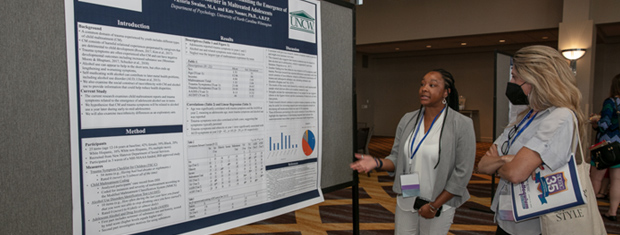




The APSAC Advisor is a peer reviewed quarterly news journal for professionals in the field of child abuse and neglect.
The APSAC Advisor provides succinct, data-based, practice-oriented articles that keep interdisciplinary professionals
informed of the latest developments in policy and practice the field of child maltreatment. It is designed to highlight
best practices in the field and publish original articles and current information about child maltreatment for professionals
from a variety of backgrounds including medicine, law, law enforcement, social work, child protective services, psychology,
public health and prevention in the U.S.
 If you wish to learn more about submitting an article to the Advisor, please click here.
If you wish to learn more about submitting an article to the Advisor, please click here.
This library contains Advisor issues dating back to the first issue in 1988. The most recent issue appears at the top.
Scroll down to select past issues by year and issue number. Once a publication appears in the box, you
can use the Enlarge button to open the document in a new window or tab (depending on how your browser is set up).
This will allow you to view the document with larger print.
To print a document, first use the Enlarge button to open the document in a new window or tab. Then use your browser's Print command.
To return here from a new tab, close the tab. To return from a new window, click your browser's Back button.
In the listing below, click on a year and issue number to see the articles in that publication.
1991 Number 2
Promising Programs and Approaches in Child Maltreatment
Only in the past decade have the prevalence and impact of child maltreatment been empirically validated As a result, professionals all over the country have established specialized treatment programs for victims, their families, and offenders.
Treatment for the Long-Term Effects of Child Abuse
A variety of long-term psychological and psychosocial problems appear to arise from childhood maltreatment. As outlined in various reviews, these include posttraumatic stress, cognitive distortions, anxiety, depression, somatic concerns, dissociation, eating disorders, sexual dysfunctions, and impaired self-relatedness.
Promising Techniques and Programs in the Treatment of Child Sexual Abuse
More than ever before, sexually abused children are being seen in therapy by individuals who not only know that sexual abuse of children exists and is a very common contributor to the child's clinical presentation, but who have also attended workshops and/or read books on the therapy of these children and their families. This represents considerable progress over the past ten years.
Replicating Child Abuse Prevention Programs: A Word of Caution
While it is tempting for those interested in expanding local child abuse prevention efforts simply to select one or more models for replication, such action is unwise.
Strategies for Changing Parental Behavior
Teaching parents new skills is a difficult task. Program evaluation, which identifies programs that work, rarely indicates which aspects of those programs were most effective. This article focuses on five commonly-used strategies for helping mothers change aspects of their parenting behavior.
Evaluating Sex Offender Treatment Programs
This article focuses on behavioral techniques, including the cognitive-behavioral technique generally known as relapse prevention. These are the most widely-used techniques and, as a result the most carefully studied.
Vertical Prosecution of Child Abuse
As is true with most aspects of responding to child sexual abuse, there is no one "correct" way to structure vertical prosecution, and every prosecutor's office is a little different The key is assigning one prosecutor as early as possible. The consistency of "the nice prosecutor lady" helps children through the often difficult processes of the law.
Working Toward Cultural Competence: One Agency’s Experience
Our country is experiencing dramatic demographic changes. The latest U.S. Census (1990) revealed that nearly one in four Americans is now a person of color, This fact marks the biggest one-decade change in the racial composItion of the U.S. in the 20th century. As a result of this change, mainstream private non-profit agencies are increasingly serving children of diverse cultural backgrounds. Minority communities and professionals are demanding services responsive to the unique needs of these children. The following discussion summarizes the efforts of one private agency to meet these needs, highlighting the elements of policy, structure, practice, and values which are believed to promote more effective services for children and families of color.
The purpose of Journal Highlights is to alert readers to current literature on child abuse. Selected articles from journals representing the variety of disciplines reflected in APSAC s membership are presented in the form of an annotated bibliography.
APSAC Advisor 4(2) - Full Issue